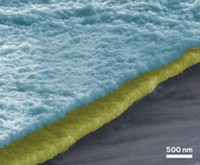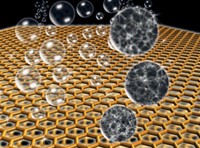Advertisement
Grab your lab coat. Let's get started
Welcome!
Welcome!
Create an account below to get 6 C&EN articles per month, receive newsletters and more - all free.
It seems this is your first time logging in online. Please enter the following information to continue.
As an ACS member you automatically get access to this site. All we need is few more details to create your reading experience.
Not you? Sign in with a different account.
Not you? Sign in with a different account.
ERROR 1
ERROR 1
ERROR 2
ERROR 2
ERROR 2
ERROR 2
ERROR 2
Password and Confirm password must match.
If you have an ACS member number, please enter it here so we can link this account to your membership. (optional)
ERROR 2
ACS values your privacy. By submitting your information, you are gaining access to C&EN and subscribing to our weekly newsletter. We use the information you provide to make your reading experience better, and we will never sell your data to third party members.
Materials
Adding A Membrane Improves Lithium-Air Batteries
Chemical heterogeneity could be used to tune forces in molecular recognition or self-assembly
by Mitch Jacoby
January 19, 2015
| A version of this story appeared in
Volume 93, Issue 3
Lithium-air batteries look amazing on paper, but so far they don’t live up to their potential. These batteries, which draw oxygen from the air, pack roughly 10 times as much energy per weight as lithium-ion batteries. But they operate sluggishly and have short lifetimes because of formation of lithium oxides such as Li2O2 during discharge. The oxides accumulate on electrode surfaces and bury catalytic sites that drive the battery’s chemical reactions. Won-Hee Ryu and André D. Taylor of Yale University and colleagues have taken a step toward mitigating that problem through a battery design modification—including a mesh membrane made from polyacrylonitrile nanofibers dotted with catalytic palladium nanoparticles (Nano Lett. 2014, DOI: 10.1021/nl503760n). The research team found that covering the oxygen-converting electrode with the insulating membrane limits formation of lithium oxides on the fiber-bound nanoparticles. Pristine nanoparticles thereby remain accessible during charging to catalyze the reverse reaction. The team reports that in contrast to membrane-free batteries, which begin to fail after about 40 charging cycles, the new batteries remain stable for 60 cycles and operate more efficiently.






Join the conversation
Contact the reporter
Submit a Letter to the Editor for publication
Engage with us on Twitter